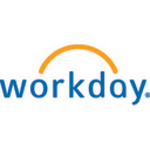What is most valuable?
Of all the current talent analytics offerings on the market today, IBM Kenexa Talent Insights is the most comprehensive end-to-end, data-agnostic analytics tool. It has instant infographic and dynamic dashboarding capabilities. You can literally click, drag and drop a massive data set into the tool, wait about 3-10 seconds, and suddenly be looking at 10 instantly relevant data analytics cases.
What Talent Insights is really is an aggregate of several different statistical and correlative tools like SPSS and others that use the computer power of IBM's Watson technology to derive deep insight into mountains of data points at incredible speed.
The output of these calculations is often a spread of possible patterns that a practitioner can then explore, or choose to ignore and instead type in, using natural language processing, their own inquiries.
The myriad number of choices that are available to explore result in a fairly daunting set of options that a more simplistic UX might 'dumb down' to appear simpler and easier to utilize and explore. So, getting trained on the user of Talent Insights is crucial to unlocking its full capability. It's a grown up, more advanced version of a data analytics tool vs an over simplified version, which doesn't necessarily require advanced expertise, but does require a user to at least be a critical or empirical thinker, such that you can properly interrogate the patterns and trends emerging.
If you compare Talent Insights say to what Workday offers (in module insight vs data agnostic insight) it appears more complicated, but Talent Insights is really just the sort of tool you want if you're serious about mashing up commercial, HR, customer data to solve for real value added business challenges. Workday, Oracle, SAP or other tools whose primary objective is managing HR days only won't give you that option.
This it appears slightly more complicated, but if you are looking for real statistical computational capability, then IBM is your answer.
How has it helped my organization?
This tool is not a 'quick fix' bit of magic, but rather a sophisticated statistical package that utilizes machine learning (think of it as self-driven insight and pattern matching – one step short of true artificial intelligence). It does this by analyzing and matching data points across a vast array of information that you provide in an Excel spreadsheet.
Imagine being able to pull data from your CRM, Finance, Marketing, Customer Service and HRIS systems (ATS, LMS, HRIS, employee survey, etc), and lump all of that into one spreadsheet. Then the statistical package inherent within IBM Kenexa Talent Insights goes to work linking, matching, correlating and seeking statistical significance in the relationships in those millions of data points to put forth insightful connections. It also tells you, on a percentage basis, just how statistically significant those relationships are. This is basically a score to indicate just how relevant a particular line of interrogation of the data is. You can ignore those elements with low significance and look at those with a greater than 60% significance rating that might yield powerful insights.
How does this improve your business? You can look at literally every aspect of your business where people are involved and interrogate who your best people are and why. You can address career paths, training, recruitment, pay and reward programs. You can find out just about anything related to individual or team performance (depending on how narrow your original information set was), and derive some incredibly powerful insights like you've never been able to before - in a matter of minutes, or perhaps hours, as opposed to days, weeks and months. You can then download your findings, correlations, and potential causality into PowerPoint presentations using one of 10 different infographic displays to help you tell your story to the Board or CXO members.
Finally, HR is not simply about HR anymore. It's about improving the business across all talent management and employee lifecycle-related aspects. It's like we finally have a microscope to see organisms at a cellular level, opening up a world of insight we've never before had.
What needs improvement?
I would say that it could likely be made slightly easier to consume and work with - less scientific or engineering oriented - but IBM Kenexa Talent Insights is about the most powerful and useful tool I've seen. You quickly get used to the interfaces, features and functions, as it only takes about a few days training before you are able to wiz around it and master its capabilities, which I've still not found the bottom of yet!.
For how long have I used the solution?
I've been an IBM Business Partner since March 2016, so I only started using it very recently.
What do I think about the stability of the solution?
Sometimes there is a slight delay in calculation time, about a minute or two (not hours) while Watson is crunching the numbers. This usually owes to the fact that there are huge data sets that the supercomputer is chomping on, and you're not the only person out there using it. There are no core stability issues, as the software is rock solid: classic IBM resilience and polish.
What do I think about the scalability of the solution?
Absolutely not: this system was built for scalability at its heart. Using a supercomputer like Watson is all about scale and size. IBM Kenexa Talent Insights can manage over a million cells of information. Its capacity is increasing by the day, as IBM keeps adding to the overall scale of the computing power.
How are customer service and technical support?
We received excellent technical support. IBM is working hard to ensure that this product line goes to market with plenty of support and customer care. I've been able to reach out to the sales engineers and data scientists. If they can't help me, they connect me with people who can.
Which solution did I use previously and why did I switch?
There were really no other solutions available. Certainly, there is nothing out there for HR analytics today that comes close to this level of holistic capability.
How was the initial setup?
It was somewhere in the middle. This has more to do with sorting out data sources, cleansing the data, narrowing and improving the data before inputting it to Talent Insights. As the old adage still holds: "garbage in, garbage out." So the up-front work, which you'd have to go through with any HR analytics implementation, is paramount. IBM supplies you with the consultants and data scientist support to ensure the best possible outcome. After it's up and running, and you have been trained to use the tool – easy peasy. You immediately get the hang of things, can generate your own insights, interrogate the data anyway you like, and build presentations within minutes. From that perspective, I'm thoroughly impressed. If there are any issues with the complexity of using this tool, it's usually with the client organization’s data challenges, not with the tool.
What's my experience with pricing, setup cost, and licensing?
IBM currently offer a minimum 10 licenses that generally land at about £35,000/year. Additionally, consulting and implementation (which depend massively on the size and complexity of your organization), can add an additional £20k - £40k to that price; but that's a one-time, one month time frame cost. IBM are also now looking at being able to offer Watson Analytics for general data analytics use (not IBM Kenexa Talent Insights - and thus not necessarily HR-oriented in its approach). Monthly, non-recurring costs are around £100/month without any obligations; but again, this is just using the Watson Analytics capability without the HR wrapping.
Which other solutions did I evaluate?
I looked at Visier, CruncHR, OrgVue and others. None were nearly so all-encompassing, end-to-end, highly flexible, information and data agnostic; easy to plug and play, or as powerful on the back-end reporting, dashboarding, and infographic display variability. IBM is carrying a very big stick with this product set, perhaps the biggest in the market at the moment.
ERP companies like Workday, Oracle, SAP, and the like say that they offer workforce analytics; but they are married directly to the modules they were built to interrogate. So with the other companies, you are immediately locked into looking only at absence management, performance management, pay management, each in isolation from the other.
IBM Kenexa Talent Insights allows you to go way beyond that and look at all HR data simultaneously, not to mention just about anything you can drop into a spread sheet format, such as Finance, Sales, Marketing, Customer Care, Survey, you name it. You can interrogate all of it at once: can't touch that.
What other advice do I have?
Make sure you work with the data scientists via your sales representative to examine your data set availability within your organization. If you are a mega multi-national, you could run into data protection regimes, pockets of isolated data that haven't been connected to global corporate data, and other similar challenges where systems are not fully integrated. Again – these are your hold ups – and the more you understand what a task it will be to unlock these data sets, the better.
You will also need executive sponsorship to help support the implementation of this stuff across the organization (which you should have for any big, multi-departmental implementation). It can help to have well-placed advocates, superusers trained and ready. Don't forget to share those insights when you get them because they will open doors all over the company to leaders, managers and employees looking for more insights as to how they can do things better, smarter, faster, and more intelligently.
Disclosure: My company has a business relationship with this vendor other than being a customer. I've been an IBM Business Partner since March 2016.









